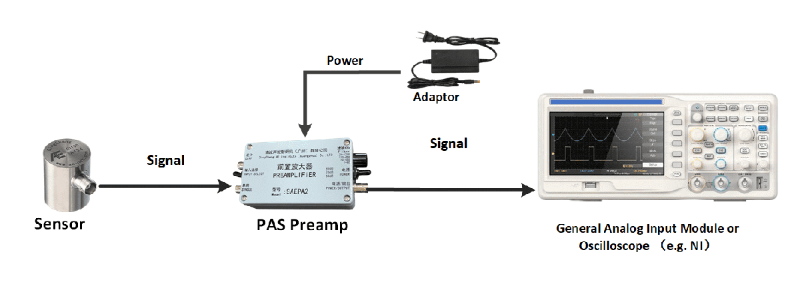The connections of acoustic emission sensor and generic data acquisition (DAQ)
Brief:When the AE sensors connect to the professional AE acquisition instruments, the AE acquisition instrument can directly provide phantom power to the preamplifier inside or external to to the AE sensor without extract power supply circuits.
When the AE sensors connect to the professional AE acquisition instruments, the AE acquisition instrument can directly provide phantom power to the preamplifier inside or external to to the AE sensor without extract power supply circuits.
But some people need to connect the AE sensors to the oscilloscopes or other generic (non-AE professional) DAQ. Then some connecting things should be noted.
Most of the generic DAQ cannot be directly connected to the acoustic emission sensor. There are a few tings to check before any connections.
-
1) One of the reasons is that the original voltage signal output from the acoustic emission sensor is too small (sometimes can be a few micro-volts) for the generic DAQ to read the effective signal. Therefore, a preamplifier after the AE sensor before the DAQ is necessary. But the generic DAQ analog inputs don’t output phantom power to the preamplifier at the same time. So we usually recommend adding external preamplifier (for generic AE sensors) or preamplifier-power-supply (for AE sensors with built-in preamp).


-
2) Check if your DAQ is suitable for the AE sensors. There are some specs of the DAQ to check. First is the analog input ADC sampling rate. According to the Nyquist Theorem, the sampling rate should be at least twice of the highest frequency component. If the AE sensor frequency range is 60kHz to 400kHz, the sampling rate of the DAQ should be at least twice, or better at four or five times, which is better to be 2MHz.
-
3) The other spec of the DAQ to check is the analog input range. It is suggested to be +/-10V, because the amplified AE signals can be that range and most AE data acquisition units are also set to that range.





